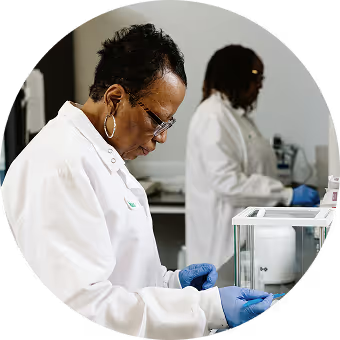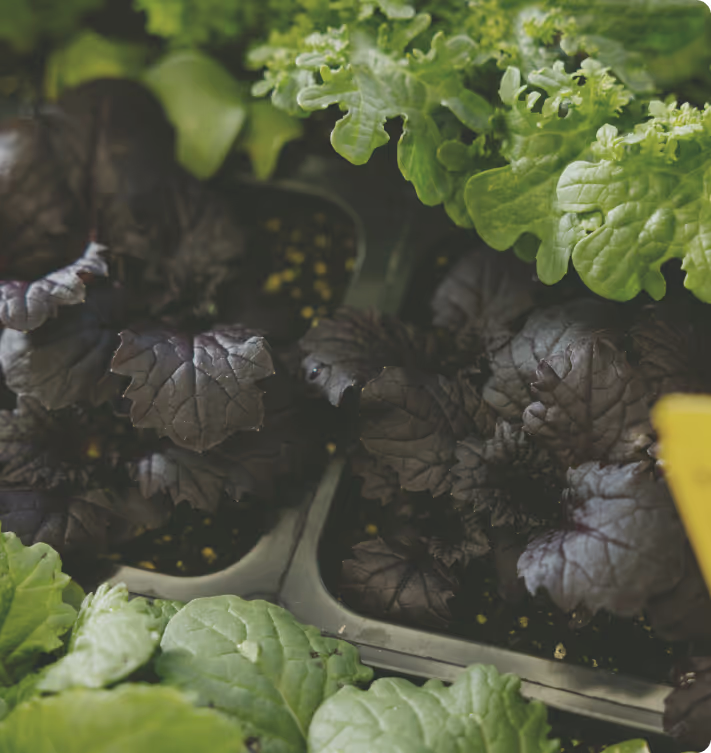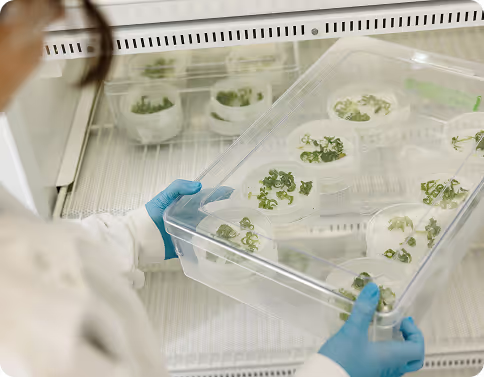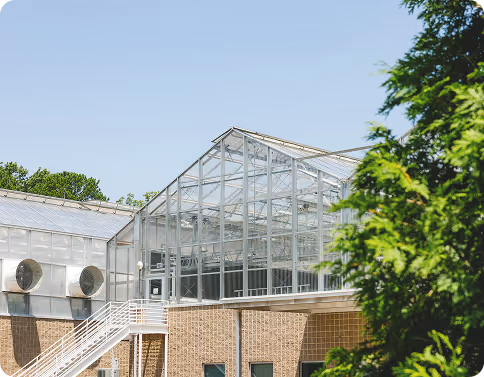.avif)
OUR PLATFORM
Our Fulcrum® platform: CRISPR in agriculture
The Fulcrum® Platform includes Pairwise-developed gene editing tools, artificial intelligence and a library of traits and expertise.
.avif)
We built Fulcrum to enable precise, flexible, comprehensive genome editing for agriculture. The platform is already in use around the world to accelerate the development of new traits and improved plant varieties.

SHARC™ – OUR CRISPR TOOLS
SHARC™ is the proprietary CRISPR enzyme at the core of our Fulcrum™ platform. Developed by Pairwise and used daily to develop new products in both horticultural and row crops.
This tool is available for licensing to commercial, academic and nonprofit partners working for use in crops, animals, therapeutics, and other fields.

Built for those making plants easier to grow and eat
We designed Fulcrum™ for plant scientists, breeding companies, and agricultural research programs that need to move quickly from concept to field.
Compatible with diverse crop species
CRISPR tools designed for agriculture—not just for cutting, but for making precise edits that introduce helpful variation
Designed to fine-tune gene expression, not just turn genes on or off
No reliance on external IP, supported by a growing patent portfolio and licensing framework
Pairwise uses Fulcrum™ to make products everyday. Our platform is proven, scalable and in use.
11
m
Transformations performed
72
%
Success rate in creating targeted crop improvements
81
Potential products created
CRISPR
in agriculture
three categories of editing tools
Tools available through Fulcrum™
Fulcrum™ includes three categories of editing tools. These allow for different types of changes to the genome and can be combined within a single program.
Tool TYPE
What it does
Editing analogy
Pairwise tool
Nucleases (e.g. Cas9, Cas 12)
Cuts and deletes DNA

Ability to remove a word:
"It was the worst of times."
→ "It was the of times."
SHARC™
Nuclease
Nuclease
Base editors
Changes single letters
(A →G, C→T)

Ability to find a misspelled word and change a letter: "wurst" → "worst"
SHARC™
Base editor
Base editor
Templated editors
Rewrites short sequences

Ability to find a misspelled word and change the entire word: "worst" → "best"
SHARC
REDRAW™
REDRAW™
Scroll to the right ➜
Global licenses
Available globally through licensing
Fulcrum tools are currently licensed and in use by research institutions, non-profits and companies around the world.
.png)
.png)

.png)
.png)






Our impact around the world
Where Fulcrum™ is making an impact
Gene editing allows us to move with precision from trait concept to prototype—and to do it in a way that continuously builds on what we’ve already learned.

Worldwide
Current Fulcrum Licenses
Broadly licensed non-exclusively across agriculture

North America
Current Fulcrum Licenses
United States:
Oil seed crops, grains, berries, cucurbits, ornamentals, legumes, vegetables, and even model species

South America
Current Fulcrum Licenses
Colombia:
Legumes, small grains, and large grains

Africa
Current Fulcrum Licenses
Chad, Ethiopia, Ghana, Kenya, Malawi, Mozambique, Nigeria, Rwanda, Senegal, South Africa, Tanzania, Uganda, Zambia, Zimbabwe, Ethiopia, Kenya, Malawi, Nigeria, Rwanda:
Indigenous millets, large and small grains, and legumes

Asia
Current Fulcrum Licenses
Bangladesh, China, India, Pakistan:
Large and small grains, and legumes
Explore the potential
Easy access to a full-suite of CRISPR tools.
Fulcrum™ simplifies licensing and expands operational flexibility, with demonstrated performance in both row and horticultural crops.

Attribute
Description
Fulcrum™ License
Production ready
Are the tools used to make products
Yes
Reach-through clauses
Are products based on insights from the technology, but not made with it, subject to royalties?
No
Multiplex editing
Ability to edit multiple genes or sites simultaneously in a single experiment.
Yes
Editing types under single license
Types of genome modifications supported (e.g., cutting, base editing, template-directed changes).
Cutting, base, template
Commercial-rights ready
Are commercial rights included and straightforward, or are additional agreements needed?
Included
Royalty stacking
Are multiple royalties owed due to overlapping
None
Stewardship requirements
Does the license impose additional obligations for product stewardship or compliance?
No
Material transfer
Does the licensor offer physical material transfer or optional training
Optional
Improvements
Does the licensor work in plants to make improvements to the technology
Yes
Scroll to the right ➜
Let’s Start the Conversation
Exploring new technologies, considering partnerships, or want to learn more about our approach?
Please don't hesitate to reach out.

